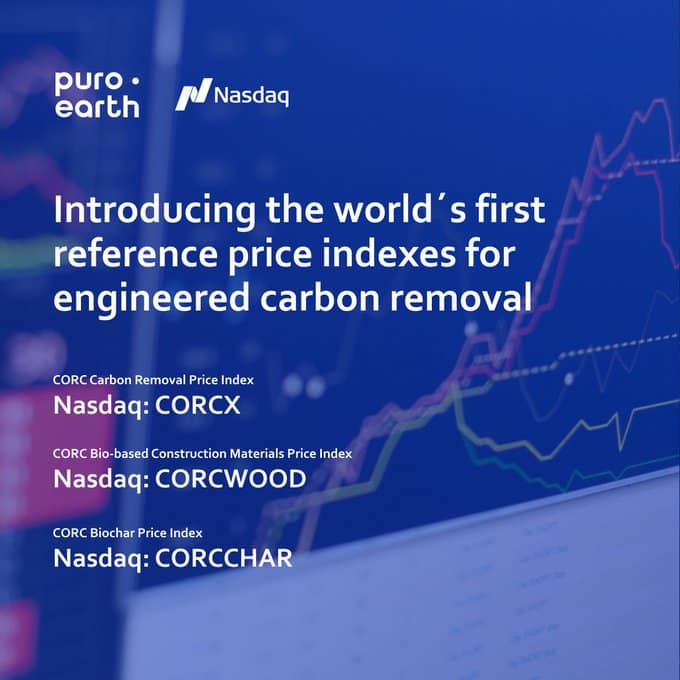Nasdaq launched 3 carbon removal price indexes, which are based on its Puro.earth Carbon Removal Certificates (CORCs).
CORC refers to the tradable digital asset representing a ton of carbon removed from the air.
With these indexes, Nasdaq promotes standardization and transparency in the carbon removal market. As such, the expected end result is the growth of the voluntary carbon removal market.
What Are Nasdaq’s New Carbon Removal Price Indexes?
These indexes track the price of removing CO2 from the atmosphere.
According to Nasdaq’s ESG Head, the indexes will create a price benchmark to better understand the costs of removing CO2.
So, they will help potential investors make an informed decision on where to put their money. This will also put forward carbon projects that are worth investing in.
There are three commodity reference price indexes involved here. And they all belong to the CORC Carbon Removal Reference Price Index family.
- CORCX – the main index that monitors the price of all CORC transactions from all carbon removal methods. It is otherwise known as the CORC Carbon Removal Price Index.
- CORCCHAR – or the CORC Biochar Price Index for biochar, a solid form of carbon generated by pyrolysis.
- CORCWOOD – or the CORC Bio-based Construction Materials Price Index. It is the price index for removing CO2 in the form of bio-based construction materials like wood.
These indexes will provide insights into the trends of CO2 removal credit pricing. In effect, they are essential for the climate finance stakeholders out there.
The Value of The Indexes to Voluntary Carbon Market
The launch of the new carbon removal price indexes is pivotal for the voluntary carbon market (VCM). This is because the market is growing fast, capping $1 billion for the first time in 2021, as reported by S&P Global.
Better still, the estimates of the Taskforce on Scaling Voluntary Carbon Markets are even brighter. According to their projections, the VCM will reach as high as $30 billion to $50 billion by 2030.
As the market for carbon removal will be more transparent and fluid, the indexes will be more crucial. They will serve as a medium for creating new financial products that lead the way to net-zero.
In fact, Puro.earth’s CEO said, “The indexes will pave the way for the commoditization of CORCs.”


